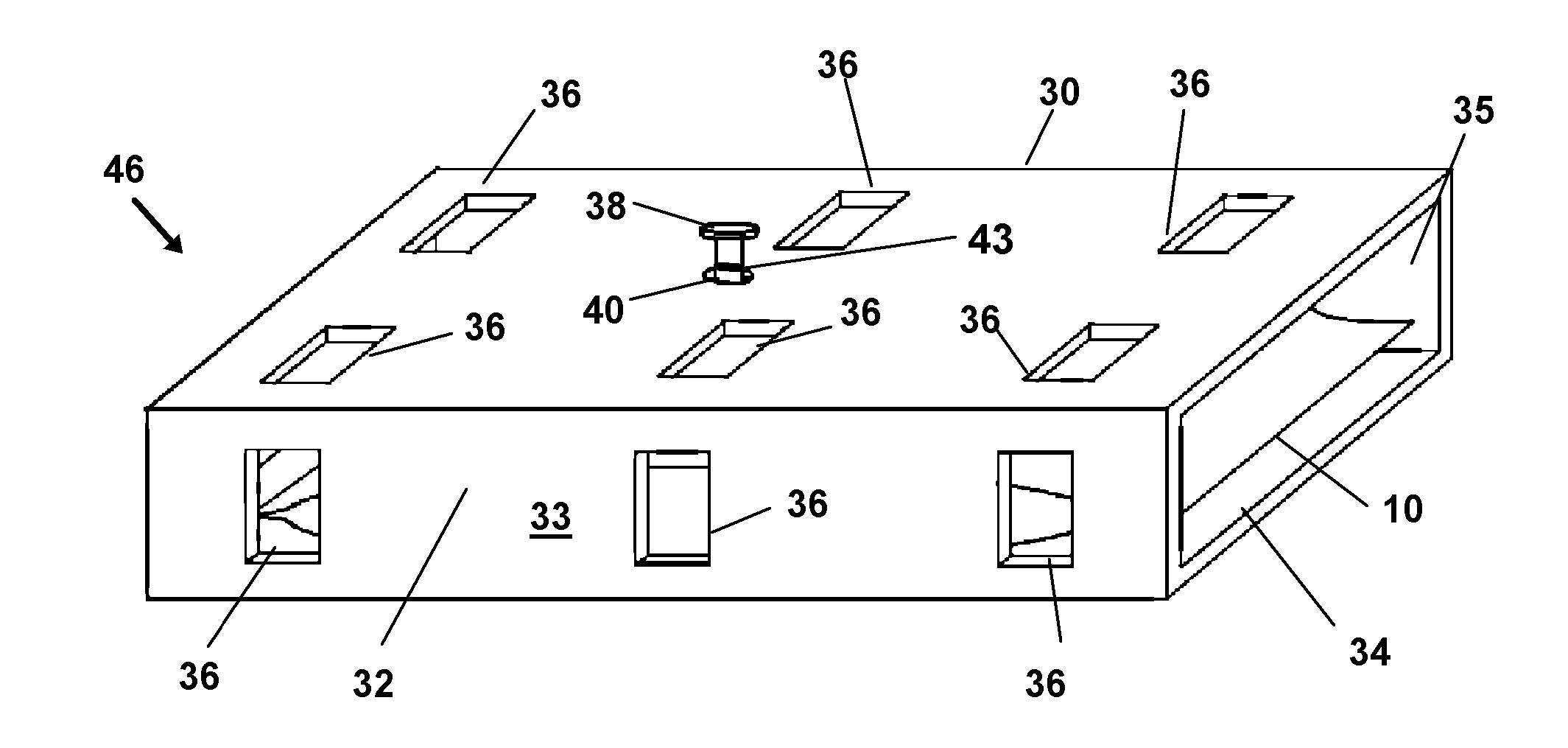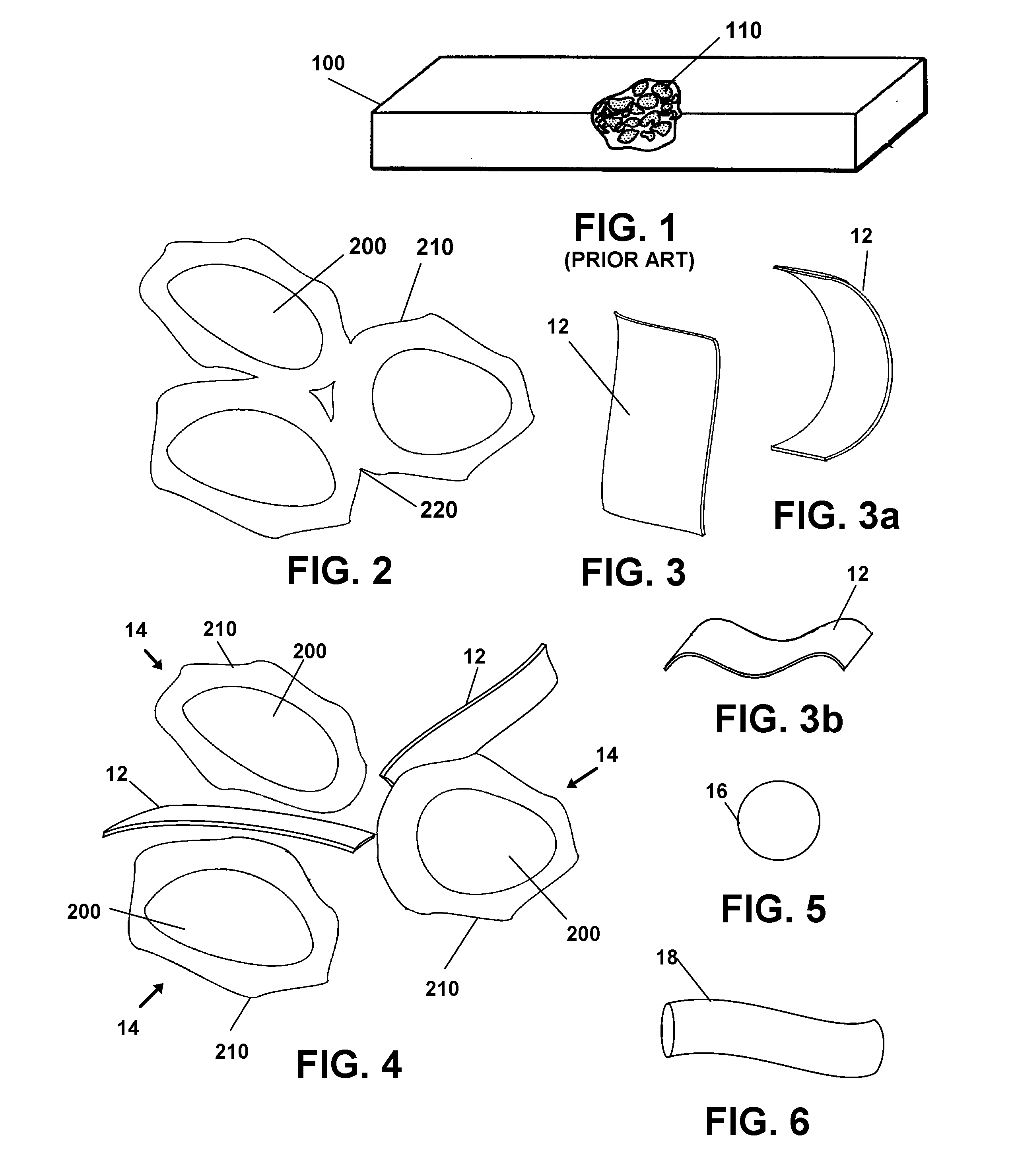Thermal Therapy Device
a technology of thermal therapy and devices, applied in the field of thermal therapy devices, can solve the problems of less desirable devices for users, clumping, and devices that fail to maintain pliable and flexible characteristics, and achieve the effects of preventing clumping, preventing clumping, and preventing adjacent formations from bonding/clumping together during the liquid-to-solid phase transition
- Summary
- Abstract
- Description
- Claims
- Application Information
AI Technical Summary
Benefits of technology
Problems solved by technology
Method used
Image
Examples
Embodiment Construction
[0038]In this description, the directional prepositions of up, upwardly, down, downwardly, front, back, top, upper, bottom, lower, left, right and other such terms refer to the device as it is oriented and appears in the drawings and are used for convenience only; they are not intended to be limiting or to imply that the device has to be used or positioned in any particular orientation.
[0039]Now referring to drawings in FIGS. 1-10, wherein similar components are identified by like reference numerals, there is seen in FIG. 1 a view of the prior art thermal therapy device 100. The prior art device 100 generally comprises a flexible container housing a plurality pre-hydrated hydrophillic absorbers 110. The device 100 is considered a great advance in the art as it provides a substantially pliable thermal therapy device 100 through a limited operative period of freezing / thawing cycles. However, experimentation has shown that the device 100 loses substantial pliability after prolonged and...
PUM
| Property | Measurement | Unit |
|---|---|---|
| size | aaaaa | aaaaa |
| surface area | aaaaa | aaaaa |
| volume ratio | aaaaa | aaaaa |
Abstract
Description
Claims
Application Information
 Login to View More
Login to View More - R&D
- Intellectual Property
- Life Sciences
- Materials
- Tech Scout
- Unparalleled Data Quality
- Higher Quality Content
- 60% Fewer Hallucinations
Browse by: Latest US Patents, China's latest patents, Technical Efficacy Thesaurus, Application Domain, Technology Topic, Popular Technical Reports.
© 2025 PatSnap. All rights reserved.Legal|Privacy policy|Modern Slavery Act Transparency Statement|Sitemap|About US| Contact US: help@patsnap.com



